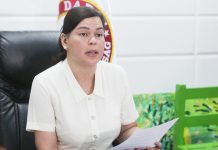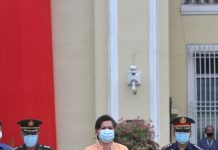With the rising threat of climate change, drought and other environmental risks, key river basin stakeholders in Mindanao are pushing for an integrated effort to protect and sustain the island’s fertile river basins and watersheds.
Spearheaded by the Mindanao Development Authority, key government agencies responsible for the management of Mindanao river basins are strongly pushing for a Mindanao-wide River Basin Development Roadmap that will guide towards a coordinated and sustainable river basin rehabilitation and management in Mindanao.
MinDA, along with line agencies, local government units, non-government and peoples’ organizations in Mindanao are set to collaborate in formulating the roadmap that will implement island-wide programs and projects on river basin management.
“Our water resources have been at risk and therefore a collaborative effort among all stakeholders is needed to protect and conserve our headwaters,” said MinDA Chair Luwalhati Antonino, adding that the roadmap will ensure a more strategic planning for the sustainable development of Mindanao river basins.
Mindanao has eight major river basins, namely the Agus river basin, Cagayan de Oro river basin, Tagoloan river basin, Agusan river basin, Mindanao riverbasin (Cotabato), Tagum-Libuganon river basin, Davao river basin and Buayan-Malungan river basin.
The Mindanao River Basin (Cotabato) and Agusan River Basin in Caraga region are among the two largest river basins in the island region.
According to the Mindanao 2020 Peace and Development Framework, Mindanao is endowed with rich ecosystems and dominated by fertile river basins and watersheds but these have been threatened by heavy reliance on extractive industries such as logging, fisheries and mining.
Mindanao 2020 said that watershed degradation in Mindanao has been largely due to heavy siltation, water pollution, unsustainable farming practices, and destruction of fish breeding grounds.
If not addressed, it will give rise to food security threats and hamper economic development.
Mindanao’s total forest cover has also been rapidly denuded from 70% in 1900s to 23% in 1988 and down to six percent as of last year.
The island’s agri-based economy is also vulnerable to risks in rainfall change, El Niño and projected temperature increase.
The Mindanao 2020 therefore highlights the need for Mindanao ’s archipelagic economy to adopt an ecosystem-based approach to development planning which underscores the importance of looking at economic development and responsible stewardship of the environment as a way towards sustainable development.
“Even as we push for industrial or agribusiness development, all of these will be put to waste without protecting and ensuring sustainability of our environment,” said Joan Barrera, Supervising Economic Development Specialist of MinDA.
She added that an integrated River Basin Development and Management roadmap for Mindanao anchored on the Mindanao 2020 is seen to pave the way for the conduct of studies as well as formulation of river basin programs and policies.
River basin stakeholders also push that a multi-sectoral, island-wide mechanism that will oversee the implementation of the plan be established.
Such mechanism will be tasked to provide technical assistance and ensure an integrated approach in river basin development and management in close coordination with LGUs, relevant government agencies, private sector groups, NGOs, academe, and other appropriate bodies.
It will also take charge of rationalizing and mobilizing public and private investments for river basin development and management in Mindanao. [MinDA]






